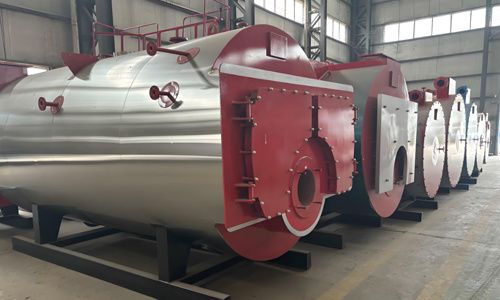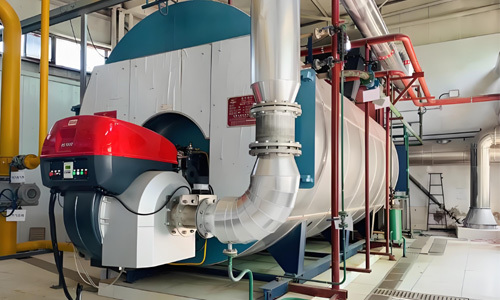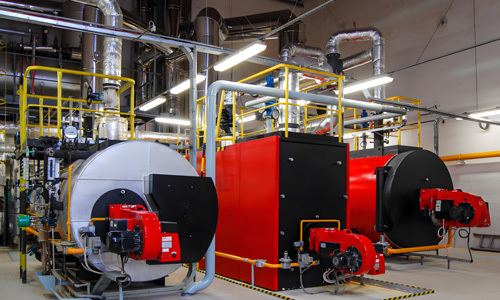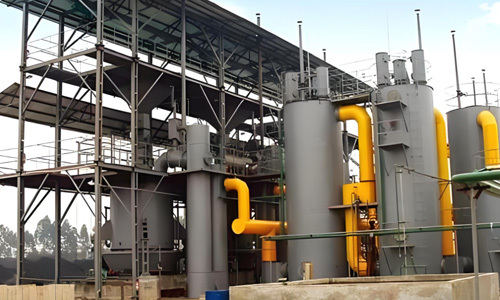Talk about the correct usage methods of steam boilers.
2025-01-11

Next, let's talk about the correct usage of steam boilers.
A steam boiler is an industrial boiler that heats water to a certain parameter to produce high-temperature steam. Water is heated in the boiler drum to become steam, and heat is released in the furnace. This is the principle of a steam boiler.
A steam boiler is a special piece of equipment. The design, processing, manufacturing, installation, and use of the boiler must be supervised by technical supervision departments. Users must obtain a boiler use certificate before they can use the steam boiler. Today, I will explain the correct operation methods for steam boilers, hoping to assist you in your work.
Inspection and preparation before a fire occurs
1. Check whether the manhole cover and handhole cover of the boiler owner are installed, whether the screws at the flange sealing are tightened, etc. At the same time, check whether the temporary partitions and other temporary plugs at the flange are completely removed.
2. The dust and debris in the furnace and flue should be cleaned. The baffles and dampers in the air duct and flue must be complete and tight, with flexible switches and accurate opening and closing indications. After inspection, close the main flue damper of the economizer and open the bypass flue damper. If there is no bypass flue, open the valve of the economizer recirculation pipe.
3. The outer wall of the steam boiler should be intact and tight, and devices such as the furnace door, ash door, fire door, and inspection door should be complete and closed tightly.
4. Check whether the safety accessories are intact, whether the valve is flexible and smooth, and whether various instruments and control devices are complete, intact, and clean. The water level gauge should be well lit. After passing inspection, the valve of the water level gauge and pressure gauge should be in working condition.
5. The handwheels on the valves of various pipelines of the steam boiler should be intact, flexible in operation, and have sufficient sealing material. After passing inspection, open the drain valve on the steam pipeline and the valve on the water supply pipeline.
6. Check whether the combustion device is intact, whether the mechanical transmission, coal feeding, and slag discharge systems are operating normally, whether the compression degree of the safety spring of the speed control box is appropriate, whether lubrication is good, whether the coal gate moves up and down flexibly, whether the scale indication of the coal gate is correct, whether the eagle is clean and intact, and whether the slag flipping plate is complete and moves flexibly.
7. Check whether the couplings of auxiliary equipment (induced draft fan, blower, water pump, etc.) are intact, whether the connections are firm, whether the tension of the V-belt is appropriate, whether the lubricating oil is good and sufficient, and whether the cooling water is unobstructed. After passing inspection, install safety guards, conduct trial operations separately, and pay attention to the current during idling. The dust outlet of the dust removal device should be tightly closed without air leakage.
8. After checking that the steam boiler meets the operating requirements, water can be introduced. When introducing water, open the air valve on the drum; water should be fed slowly, and the water temperature should not exceed 90 degrees. In winter, the water temperature should be below 50 degrees. When introducing water, check whether there is any leakage at the water inlet, handhole, valve, and flange; otherwise, stop the water supply for treatment. When the water reaches the low water level of the water level gauge, seal and stop the water supply. At this time, the water level in the water level gauge should remain unchanged; otherwise, find the cause and take measures to eliminate it.
Key words:
Boiler manufacturing
Related News
2024-05-22
China Boiler Network aligns with the supply market and innovates the main body model.
2024-05-22
The two main approaches for the transformation of coal-fired industrial boilers.
2024-05-22












